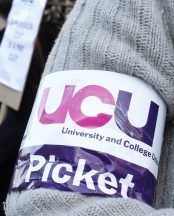Slushy drinks should not be sold to children aged four and under, new voluntary guidance says after youngsters were rushed to hospital after becoming ‘intoxicated’ earlier this year.
Parents in Perth and Kinross were warned to keep an eye on what their children have been drinking after doctors linked a rise in youngsters being admitted for treatment to the icy drinks.
It was thought high levels of glycerol in the treats, which stops them from freezing completely and keeping them slushy, were the cause of the issues.
The new guidance, issued by Food Standards Scotland (FSS) and the Food Standards Agency (FSA), advises manufacturers to tell retailers that they should not offer free refill promotions to under-10s, to prevent young children being exposed to excessive amounts of glycerol.
The updated guidance follows an FSA risk assessment which found that children below this age may suffer from headaches and sickness caused by exposure to glycerol.
FSS and the FSA are aware of two cases in Scotland, in 2021 and 2022, where children were hospitalised because of glycerol intoxication.
At very high levels of exposure – typically when several of these products are drunk by a child in a short space of time – glycerol intoxication could cause shock, hypoglycaemia and loss of consciousness.
Stephen Hendry, head of labelling, standards and regulated products at FSS, said: “While risk assessment work shows that symptoms of glycerol intoxication are usually mild, it is important that parents are aware of the risks – particularly at high levels of consumption.
“We are grateful to those manufacturers who have already taken steps to reduce levels of glycerol, and to those who have already told us they will be adopting our new guidelines.”
Slush ice drinks can contain glycerol as a substitute for sugar to create the slush effect. The new guidance asks businesses to only add glycerol at the minimum quantity technically necessary to achieve this effect.
While glycerol is found in some other foods, it is added at much lower quantities than in slush ice drinks.
The FSA’s risk assessment considered a worst-case scenario of a 350ml slush drink containing the top level of 50,000 mg/L glycerol as potential exposure but a higher threshold for adverse effects, which children aged four or below would exceed.
Those above the age of four are considered unlikely to suffer ill effects from drinking one slush drink. This is because the effects of glycerol are related to body weight.
The FSA’s risk assessment and advice considered the average weight of children at different ages.
If, in the future, the maximum levels of glycerol used by industry decrease, the new industry guidelines may be reassessed.
Follow STV News on WhatsApp
Scan the QR code on your mobile device for all the latest news from around the country





























